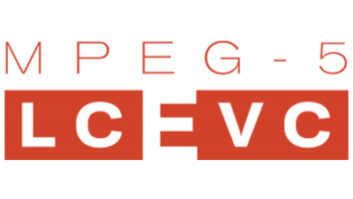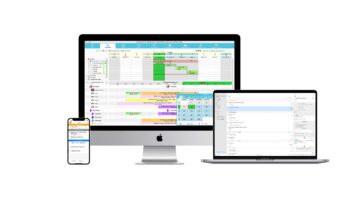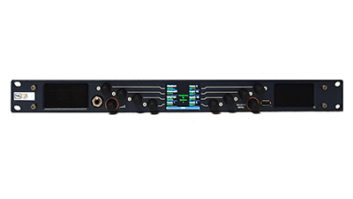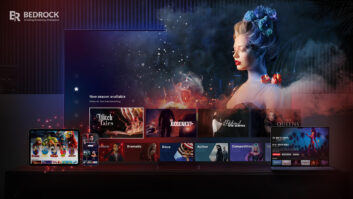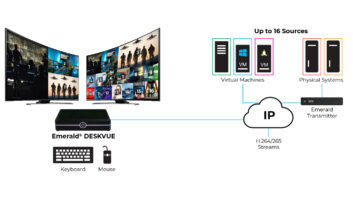Jean-Marc Racine, chief product officer, Haivision, explains how the company is dealing with the challenge of the speed of new technology adoption by customers, and the competition for talent within the industry.
What impact has the pandemic and its continuing aftereffects had on the company’s approach to R&D and product development?
The remote workflows that we had created in the early months of the pandemic helped our teams work together more efficiently than ever before. These workflows helped us achieve several important corporate milestones – we successfully took the company public in December 2020, and we acquired CineMassive (video wall technology) in 2021, and Aviwest (mobile video transmission technology) in 2022. While the acquisitions distributed our R&D teams globally across Canada, the United States and France, we were able to closely collaborate on product integrations and developments across our product lines.
Since the pandemic, we’ve rebalanced remote working to a hybrid model that helps us to continue to be efficient in our R&D and product development activities, while still enjoying the benefits of remote work.
What are the biggest challenges you are facing in R&D and product development/deployment in the current landscape?
The real challenge we’re seeing in R&D and product development is appreciating the speed of adoption of new technology trends by our customers and deciding how do we adapt our R&D investment to meet the demands of our customers.
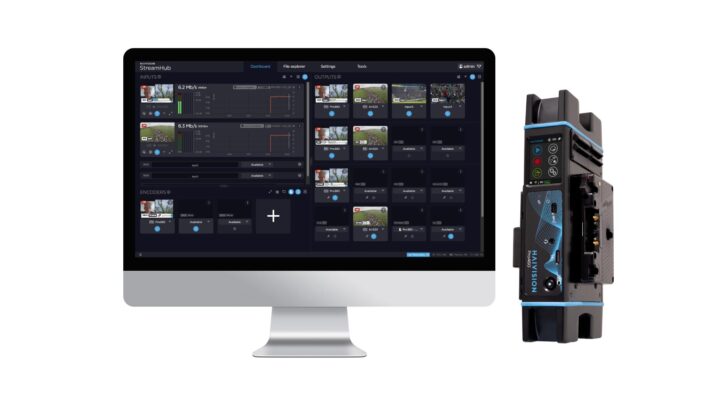
The cloud is a perfect example – while you’re reading trade articles about how cloud is everywhere; the reality is that the world is hybrid. In fact, according to our annual Broadcast Transformation Report, 84 per cent of broadcasters use at least some cloud-based technology in their workflows with 60 per cent relying on cloud for less than a quarter of their workflows, which indicates that on-premise operations remain critical to live video.
Based on this, balancing our investment in cloud and on-premises development to maintain the attractiveness and value of our product for our customers is important.
Our other challenge is the competition for talent and how you make sure you have the right mix. At Haivision, we have hardware, embedded software, and cloud development needs and we constantly are balancing our workforce to excel in the three distinct areas requiring very different skill sets. The flexibility that comes from the potential to hire remotely is very useful, but when given the chance, we hire in the main R&D centres of the company, and face-to-face interactions are an important part of how we build our company culture.
Where do you see the most opportune areas for innovation in your area of the market, and what tech/solutions will drive that development?
The video asset is becoming critical to many of our customers in the broadcast industry as well as for our customers who rely on video to protect and save lives – including our public safety and government customers.
People take for granted that video is always available at low latency in high quality, but it remains a complex task to do this at scale. Being at the forefront of this constant innovation of delivering high-quality, low-latency video is something that we remain committed to and focused on.
Take the SRT protocol – it’s the video streaming protocol we opened sourced and that we continue to develop and nurture. With the rapid and mainstream adoption – most recently with YouTube adopting the technology – It’s become the defacto industry standard and it’s a great illustration of the continuous innovation taking place at Haivision.
What are you working on currently that excites you as a product team, and what can we expect to see at IBC 2023?
Live video is critical to today’s broadcasters – its popularity has brought larger audiences and more opportunities for monetisation through advertising and subscriptions. At IBC, we will show how all our products are coming together with our new cloud master control solution to help broadcasters with efficiency, workflow flexibility, scalability, and cost savings by managing all of their video contribution operations for live events from a single platform. That’s what you’ll see at IBC…and actually you’ll probably be reading about it here in TVBEurope.


